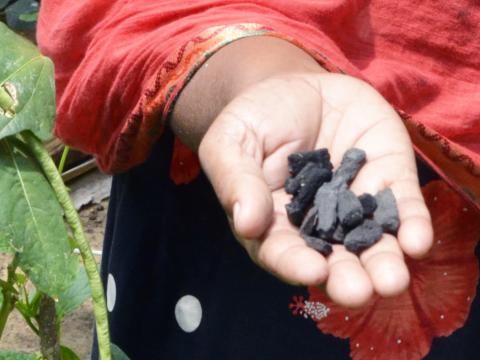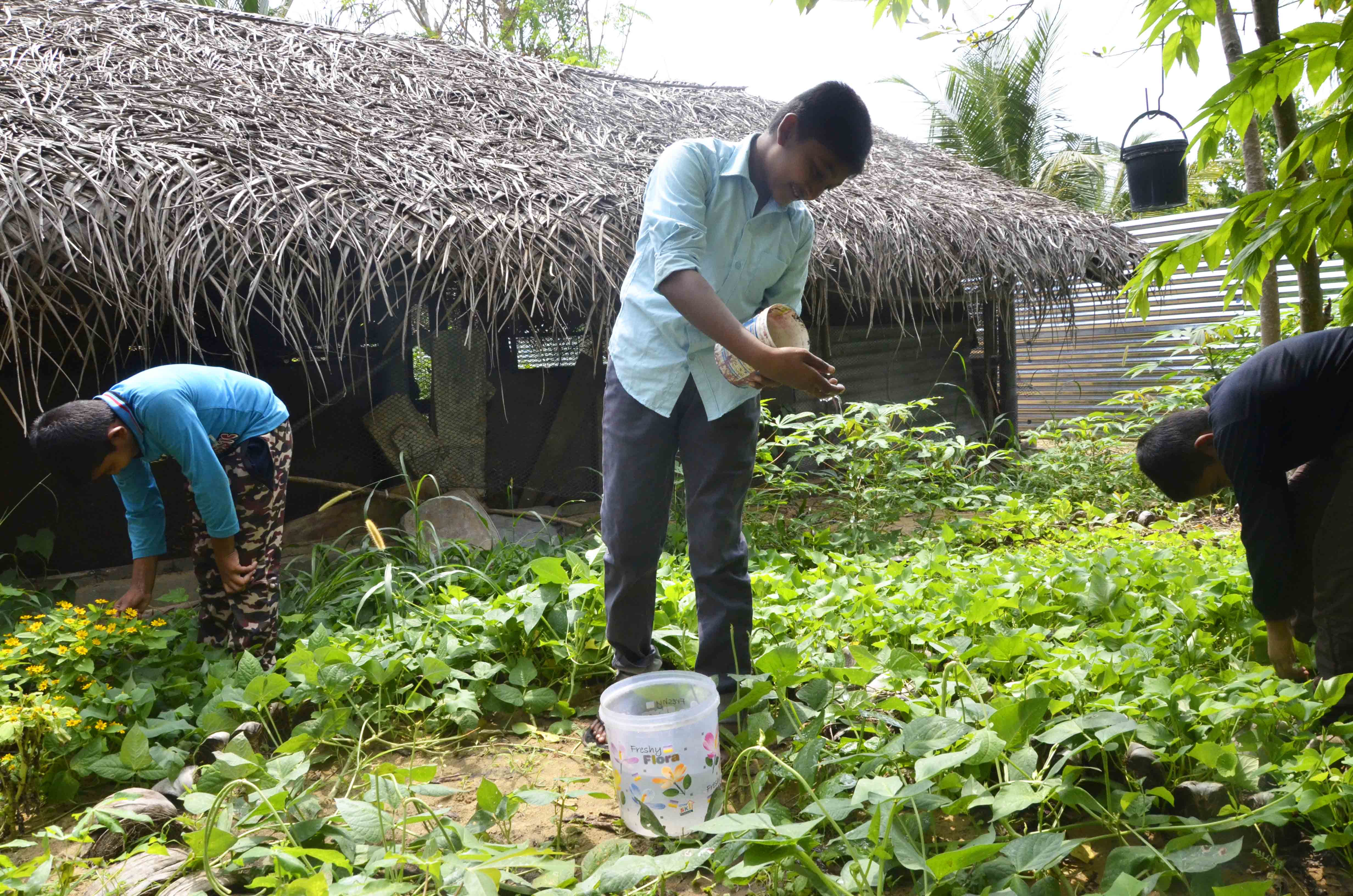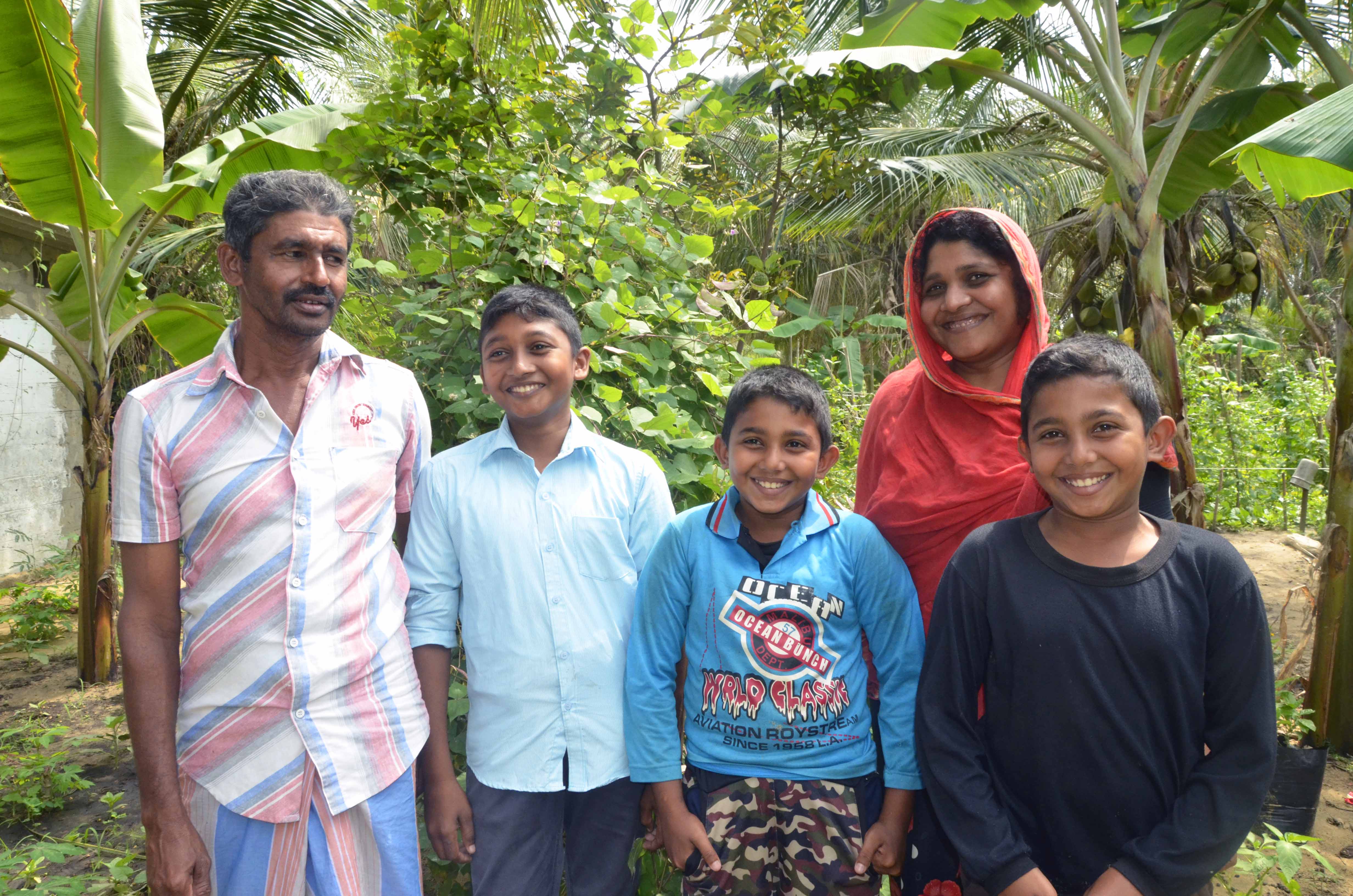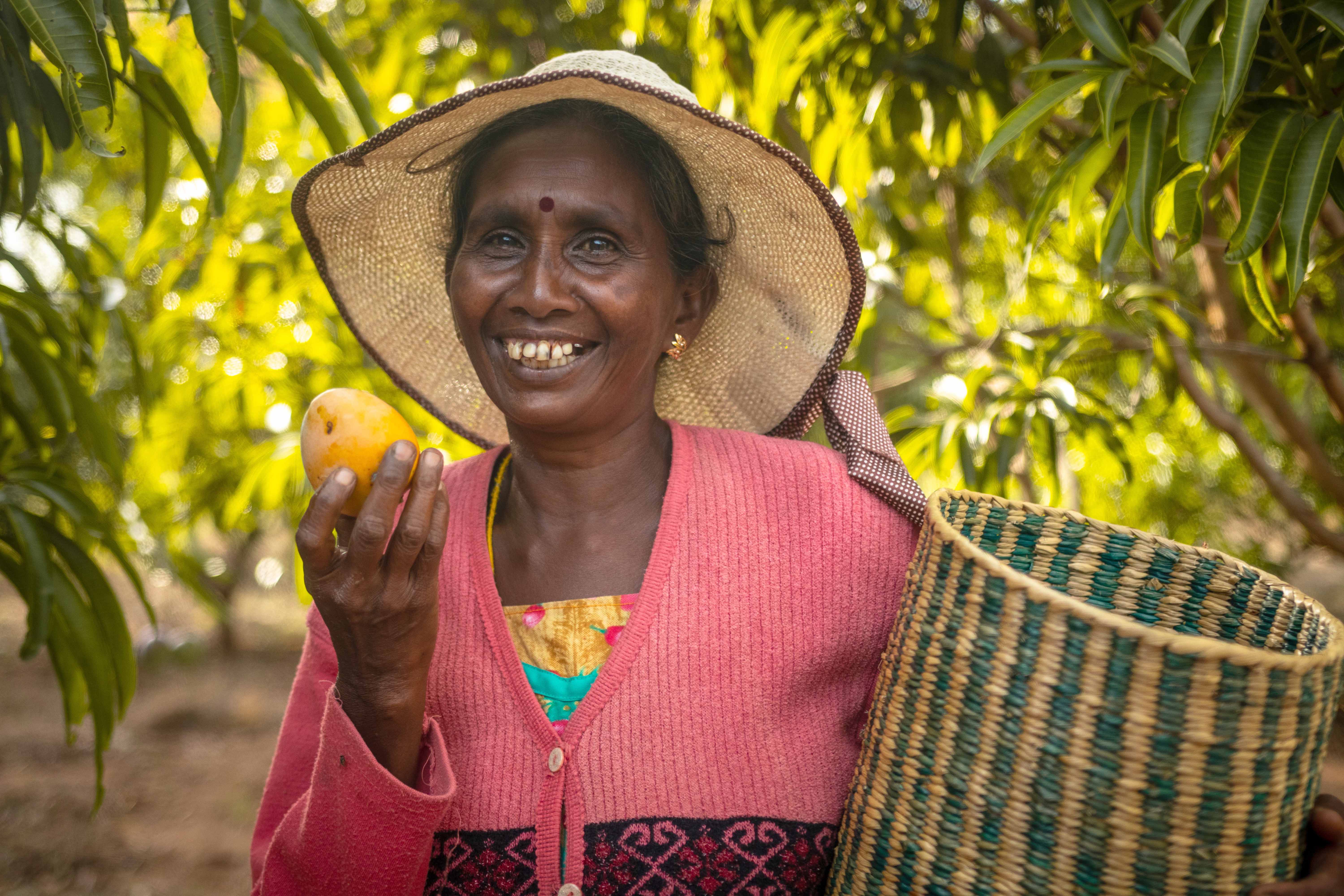From chemicals to compost

Story by Vinusha Paulraj
Thasleema Beham has chosen a red shawl for the day. Giving it a quick tug around her head, she welcomes us into her garden. “Come! Sit down!” she says, planting two plastic chairs in the soft, coastal sand. Enveloped in palms, pink and purple wild flowers nodding in the briny breeze, there’s no shortage of fresh, green surrounding Thasleema’s small yellow house. “I’ve always wanted to be a farmer, like my father” she says, taking a seat. As a Friday’s call to prayer from a nearby mosque wafts-in, she’s already managed to get her three sons showered and ready. “I enjoy seeing things grow and now, I see that same interest in my children” she smiles.
In fact, Thasleema recalls her occupation to have always been a family business- “I used to help my father since I was around 11. We grew everything! Like onions, chillies, a variety of beans and even tomatoes.” Although she took-on little jobs like caring for one plant at a time she decided it was time to grow her own patch of yams “when I was 17. I can’t describe the feeling I got when we finally dug-out the fully grown roots. The process is also very interesting to me- it’s like digging for treasure.” There was no room for debate when it came to her choice of career. Job satisfaction however came at a very high price.
“Growing these crops to sell is not easy.” The powdery soil retains little water and the dry North-Western landscape demands the use of chemical fertilizers. It is reported that currently, the region’s ground water is contaminated with the fertilizer’s harmful effects. “It’s not surprising” because “even we didn’t have a choice, if we had to make a profit, we had to use chemicals. Until World Vision told us this was harmful, we even ate these crops.” Producing several kilos of vegetables was a problem because “the chemical fertilizer is expensive. Plants generally need a lot of it when they are just starting to grow, particularly potatoes and root vegetables. We could never afford enough fertilizer so we managed with what we could afford.”
Since 2012, however Thasleema has been making changes to her little green oasis. “We started using lesser of the chemicals and more natural fertilizer.” Pointing to a green plastic bottle tied above her children’s reach on a coconut tree she admits that getting rid of the chemicals entirely is difficult. “It takes much longer to grow things without fertilizers- which means I have to spend for more water and electricity to pump the water.” By now, Thasleema has had enough of sitting down. She invites us to explore the abundant garden. “It’s much better!” she says excitedly when we ask how using mostly natural compost is working out. “We don’t fall sick very often- I don’t know if there is a connection, but we used to get a fever very often before- now we only get a cold when it gets a little misty.”
Health isn’t the only improvement for the Beham family. “Around 6 months ago, World Vision also told us to grow crops in a different way” she shares, leading us to a unique patch of plants. We follow the red shawl through leafy paths deep into Thasleema’s densely cultivated property. Coconut trees which are usually cultivated at a distance of 12 feet from each other stand in between various shades and shapes of green. “They told us to plant coconut palms 40 feet apart, banana trees at an 18 foot distance and papaw plants at 8 feet.” In between the waist-level pawpaw sprouts we observe a variety of leafy cabbages, chillies and other vegetables. Since these plants yield at different intervals, “I always have something to sell.”
This in turn brings a steady stream of income but the full benefit of this cultivation method is under the soil. “Coconut roots are the deepest, so it filters and retains the ground water” Thasleema explains. “Even if we reduce using chemicals, other farmers don’t and the ground water is still contaminated.” The other roots, growing at a shallower depth take nutrients down to the coconut roots as well- “so we can use only natural fertilizer and sunlight to grow these products fast with less water and waste.” As far as experiments go- this is not the only one under her supervision. Before long, we’re once again following the red shawl through rows of young tomato plants.
A large rectangular plot, split down the middle is her latest project. “People come from World Vision to check” the plot sitting between coconut and banana trees. This time however, the method of fertilizing is the independent variable. “I’m growing the same crops- but I use bio charcoal on one side” she says pointing at the lusher side. A lot of work goes in to keeping the experiments conducted by World Vision and the University of Peradeniya alongside her usual vegetable patches. “I get a lot of help from my husband and my sons” she smiles, “my husband helps me before he goes to find work in the mornings.” Her three sons help tending the family’s two goats and pet peacock. “They also help me with the farm work- like me when I was younger they also have their own little plants.”


